What is an Inductor?
Inductors are some of the fundamental components in electronics, and play a critical role in power systems, filtering, and isolation. Simply put, an inductor is a component that can store energy in the form of a magnetic field. A typical example of an inductor is a coil of wire which can be found in air coils, motors, and electromagnets. Another way to look at inductors is that they are components that will generate a magnetic field when current is passed through them, or will generate an electrical current when in the presence of a changing magnetic field.
What is an Inductor?
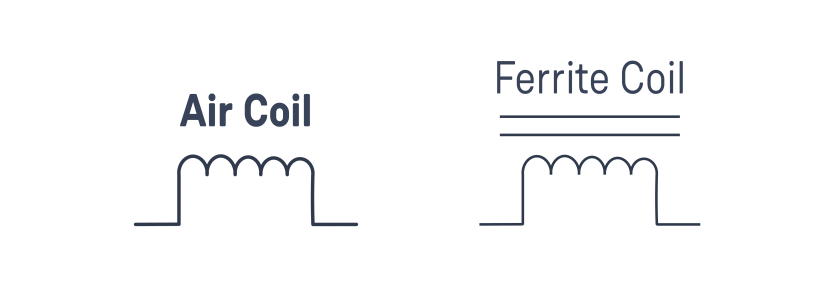
While capacitors store electrical charges, inductors store magnetic energy. In the DC world, an inductor looks like a piece of wire which can conduct electricity. In the AC world, an inductor looks more like a resistor combined with a capacitor, as inductors resist changes of current flow through them, and if the current through an inductor suddenly falls then the inductor attempts to re-introduce the old current by converting its magnetic energy into an electrical current.
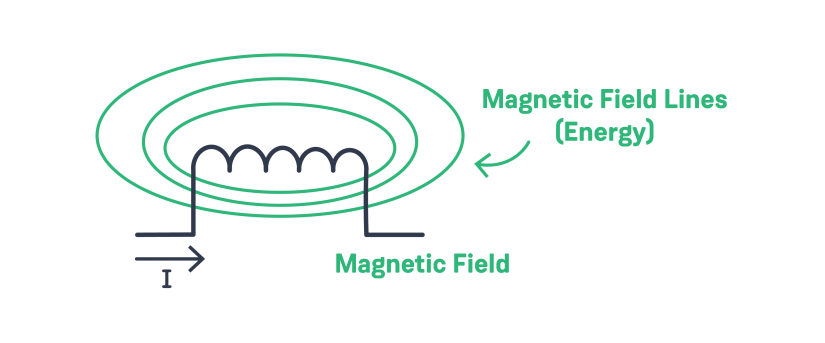
Inductors are very strange components, and explaining why they work the way they do is complex. But hey, let’s try to explain it anyway!
Imagine a straight piece of wire; if we pass a current through this wire then a circular magnetic field is formed around it.
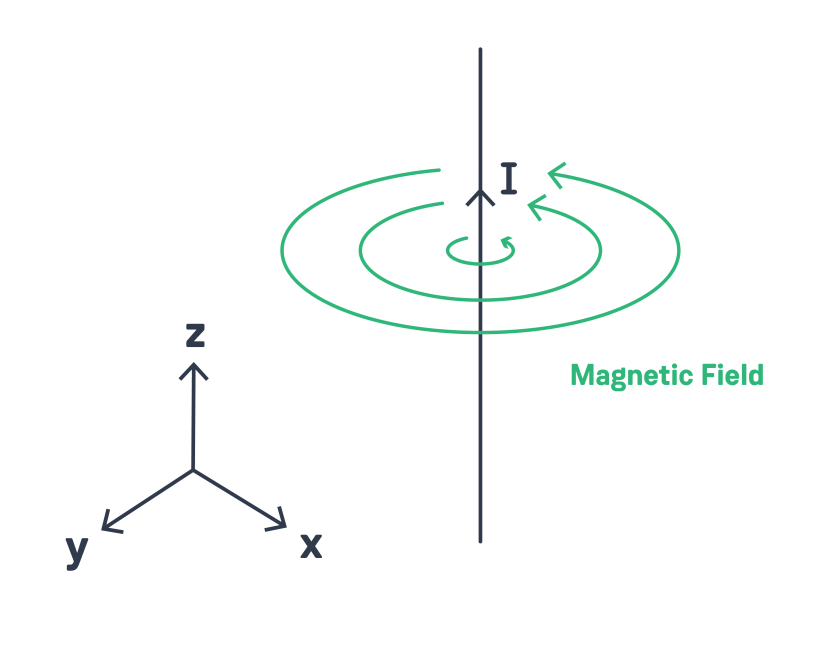
If we bend this wire into a single loop, we can see that each side of the loop has fields in opposing directions. This is what creates our north and south on an electromagnet.
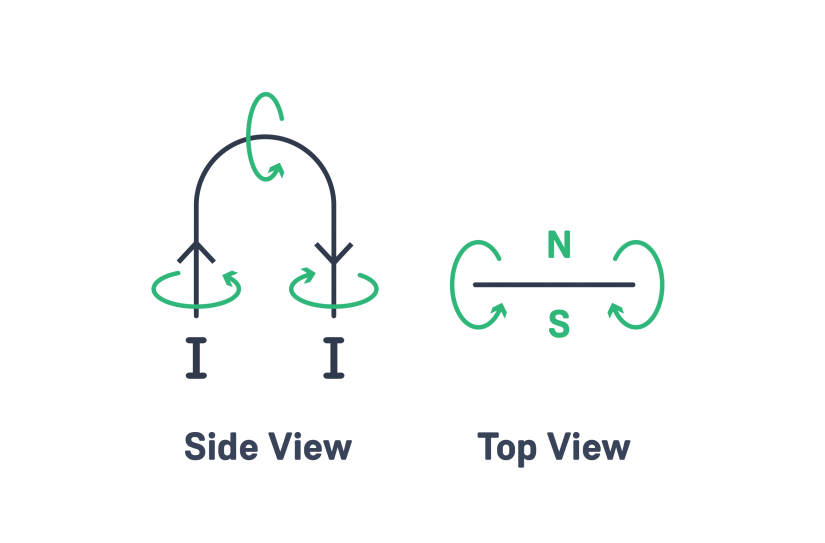
If we add more loops, we increase the number of magnetic rings being generated by the wire and therefore make a more powerful electromagnet. Thus, we have increased its inductance!
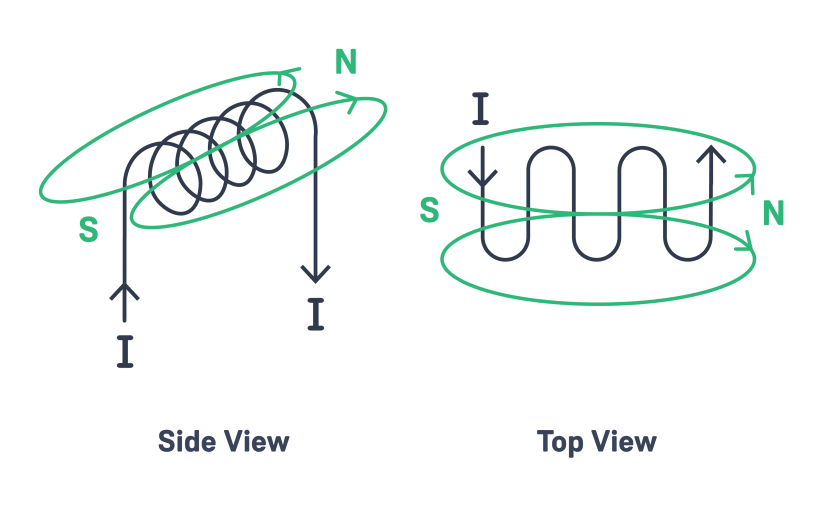
If we have a coil with no current flowing through it, then it's just a boring old coil doing nothing. If, however, we pass a magnet through it, the changing magnetic field caused by the magnet induces a current into the coil. When the magnet reaches halfway through the coil there is no current induced because the magnetic field ahead of the magnet creates an opposite current to the one being generated behind the magnet. As the magnet continues to fall through, a reverse current is generated until the magnet leaves the coil.
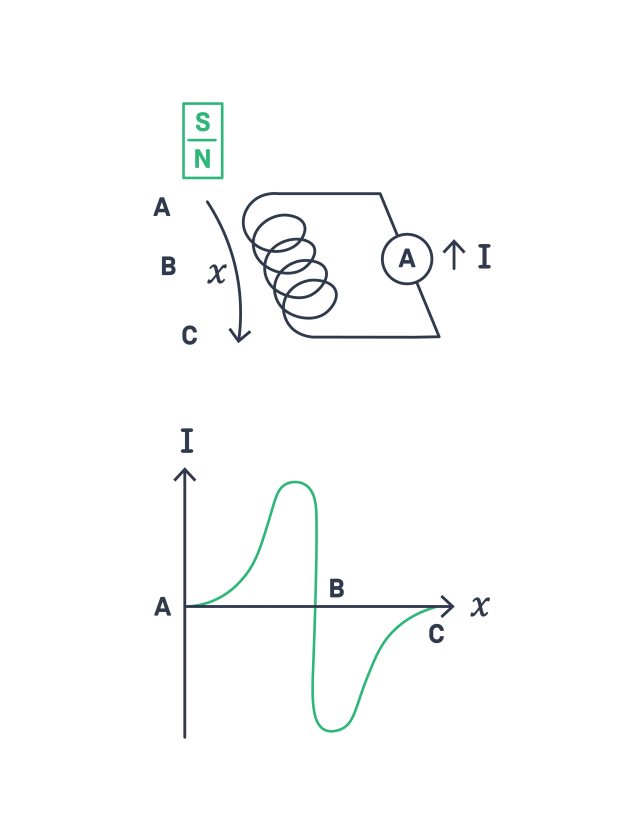
An inductor in Depth - How Do Inductors Work?
So we know that an inductor is a component that can store energy as a magnetic field, or generate electricity in the presence of a changing magnetic field (changing is the key word there), but what about the specifics behind inductors?
Inductance is measured in Henrys (H), and one Henry is quite big; many inductors will be measured in the mH to uH. The definition for a Henry is when a current of 1A produces a flux linkage of 1-weber turn; however to most this definition is rather meaningless. Essentially, this definition says when a unit of current creates a unit of magnetic field strength then its inductance must be one henry.
Inductors come in all shapes and sizes but usually fall into one of two categories; air coil or ferrite core. An air coil inductor does not have a ferromagnetic core material and instead has a core of air. A ferrite core inductor is one where the core material inside the inductor is ferromagnetic. The core itself is not electrically connected to the inductor in any way; the core helps to guide the magnetic field lines to produce a more powerful inductor.
One thing that inductors do which is very interesting is that they like to resist change in current through them. If, for example, you have a steady 10A flowing through an inductor then the inductor will provide no resistance against that current. If, however, you try to decrease that current to 5V, then the inductor will re-induce current back into the circuit such that trying to apply 5A may result in an overall current of 8A. The same happens if you try to increase the current, the inductor will try to keep the current at 10A if you suddenly increase the current to 15A. Why does this happen? It’s all to do with the magnetic field energy!
Firstly, remember that inductors store energy in their magnetic fields. Secondly, remember that a changing magnetic field in an inductor induces an electrical current. If we combine these two phenomena together we get the following effect…
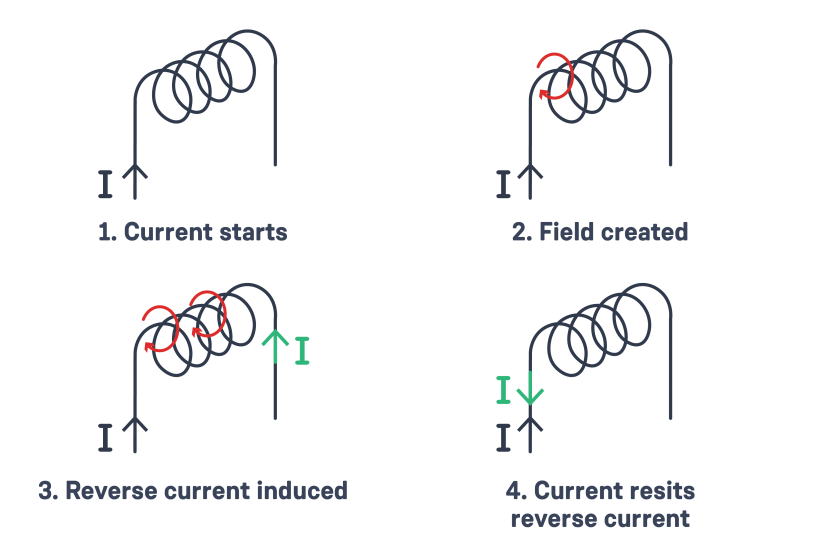
- A stable current through an inductor creates a magnetic field
- If this current suddenly drops, then the magnetic field begins to collapse
- The collapsing magnetic field causes a change in the magnetic field through the inductor
- This changing magnetic field induces a current in the inductor
- When the magnetic field has stabilized, no more current is induced into the inductor
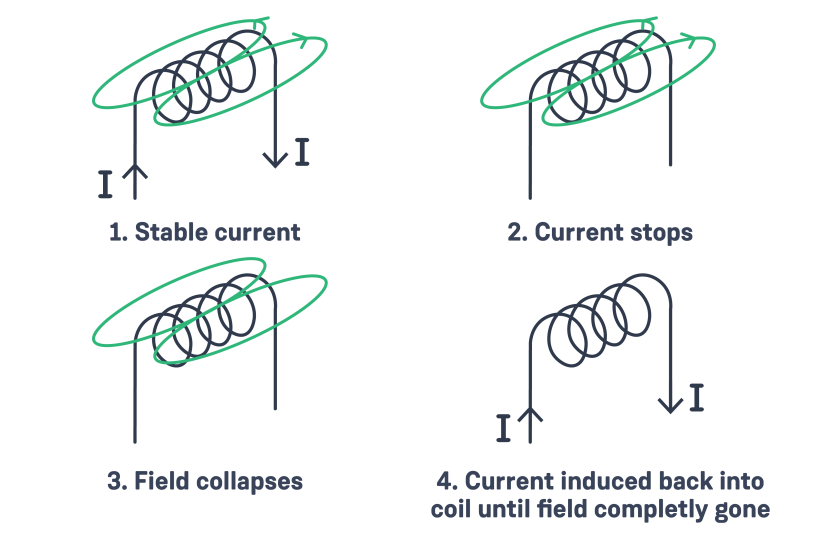
Reactance
As we saw earlier, inductors have resistance to AC currents, and this is known as reactance. However, the reactance of an inductor takes into account both the inductor inductance and the frequency of the current. A DC current has no frequency, and thus an inductor has no reactance to a DC current. An AC current, however, experiences reactance, and the reactance is calculated using the formula below:
XL=2πfL where L=inductance (H) and F=frequency (Hz)
This equation shows that the “resistance” of an inductor to an AC current is directly proportional to both the frequency and inductance.
Just like resistors, inductances add up in series to give the following formula
Ltotal=L1+L2+...+Ln

In parallel, inductors also divide out like resistors
1/Ltotal=1/L1+1/L2+...+1/Ln
Inductor Types - Air Coil vs. Axial Inductors vs. Ferrite Core vs. Choke Coil Inductors vs. Transformers
Like many other components, inductors come in a variety of shapes, sizes, and functions. Learning how to identify different types will not only help you understand how to choose an inductor for your project, but also reverse-engineer other designs, and figure out how to fix them!
Air Coil
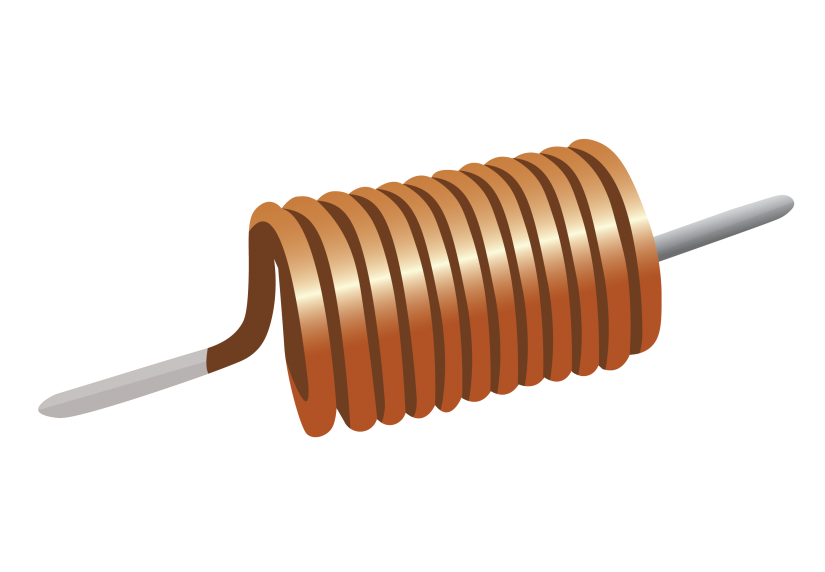
Air coil inductors are the most obvious kind and are simply a coil of wire. These are often found in radio circuitry with frequencies below the GHz range. One example of where air coils can be found are in 433MHz transceivers, and are often very small!
Axial Inductors
Axial inductors are inductors formed into a through-hole resistor-like package. These use color bands to indicate their inductance and can be very useful when an inductor of a generic value is required. Air coil inductors are often wound by hand to get a specific inductance, but the use of pre-made axial inductors allows for the quick construction of a circuit. These types of inductors stand out from resistors as they are turquoise in color.
Ferrite Core
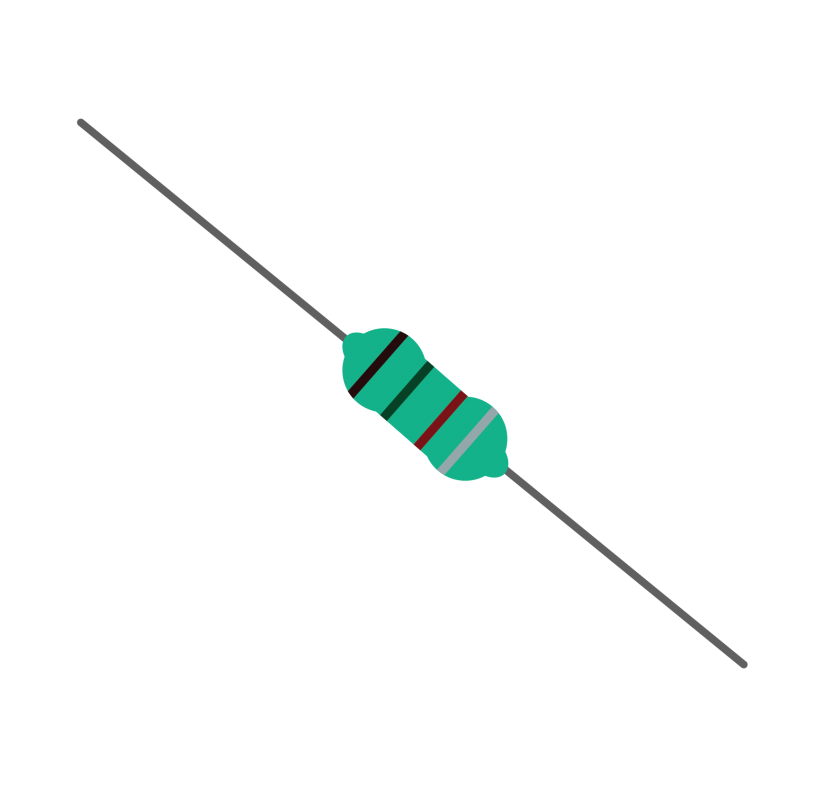 Ferrite cored inductors come in many varieties with some being through-hole, while others may be in a surface mount package.
Ferrite cored inductors come in many varieties with some being through-hole, while others may be in a surface mount package.
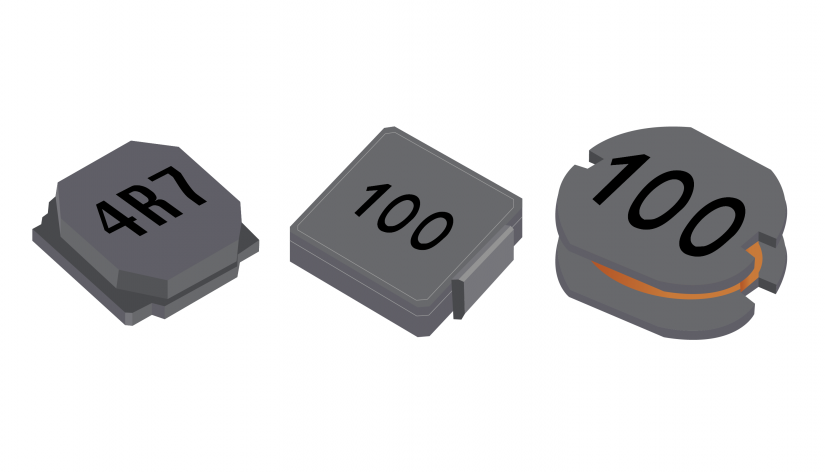
These types of inductors are often bulky in size either being wide or tall and in many cases, the iron core itself will be visible. Such inductors are used when a large inductance is required (e.g. a DC-DC regulator).
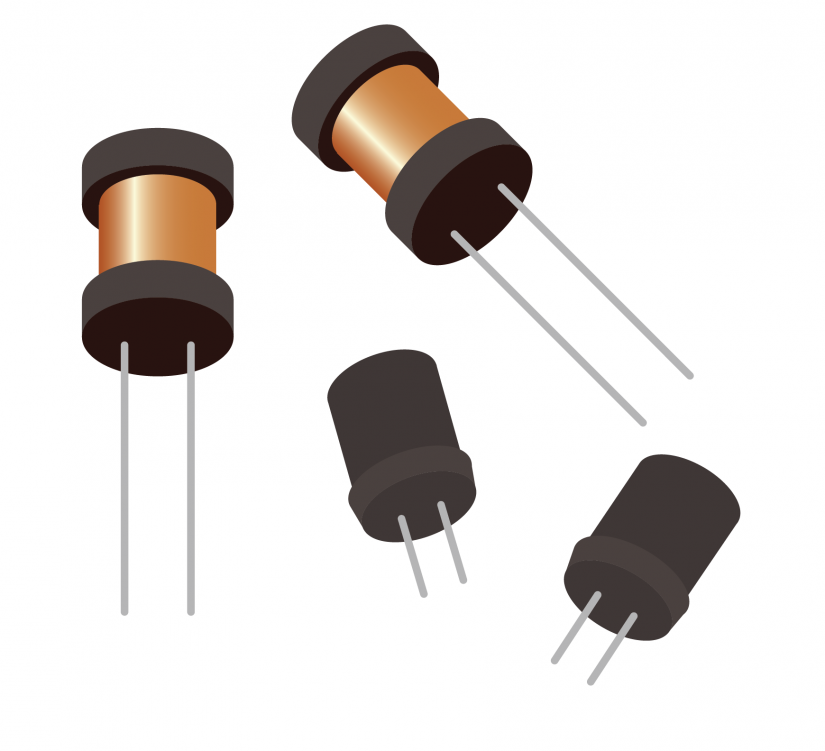
Choke Coil Inductor
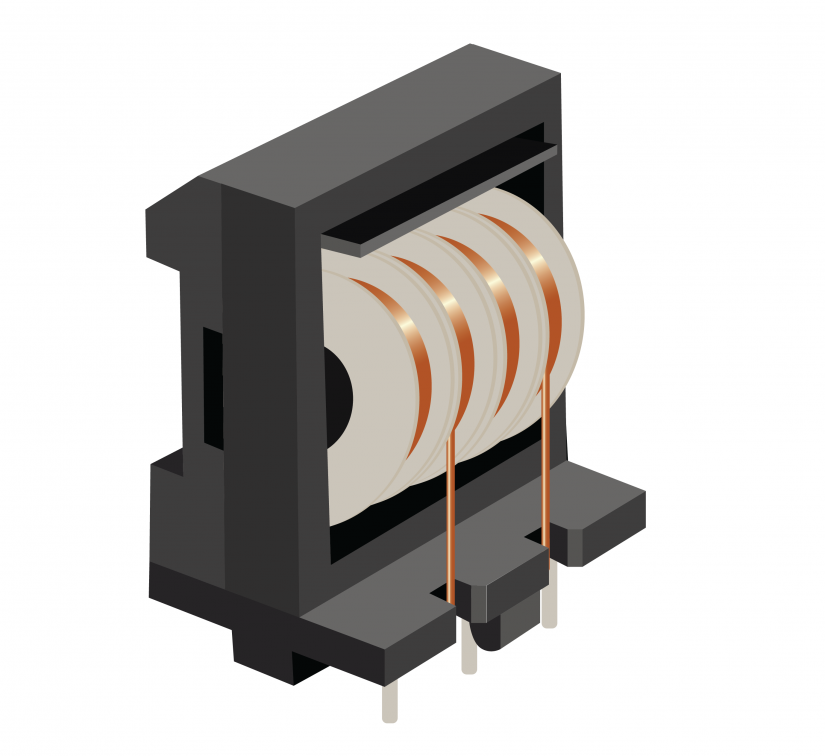
A choke is an inductor specifically designed to prevent AC signals from passing through while allowing DC. These inductors can be found in surface-mount packages, but are generally in large through-hole packages often consisting of a toroid ring wrapped in a coil. Chokes can also be used in common-mode configurations, which prevent common-mode noise from entering a circuit.
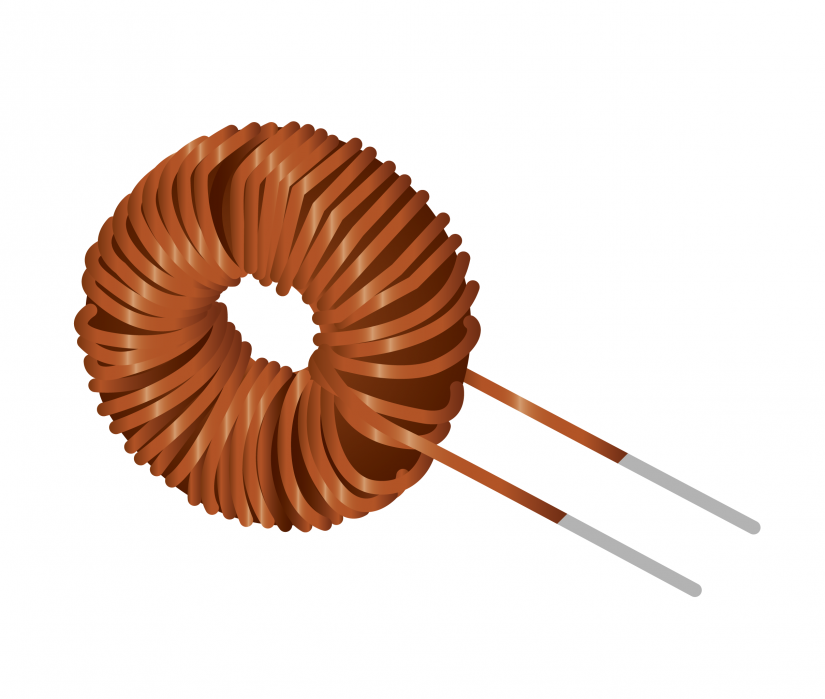
Transformer
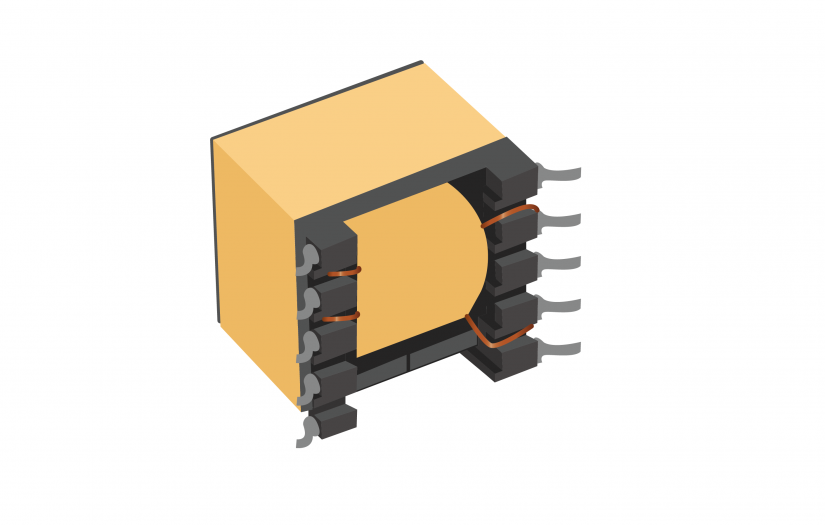
A transformer is essentially two inductors linked together by a single core. When one of the inductors has a changing current applied to it, the changing current creates a changing magnetic field in the core, and thus induces a current in the second inductor. Transformers allow us to convert one voltage into either a larger, smaller, or identical one and are particularly useful in isolating two circuits from each other.
Inductor Applications - How are Inductors Used?
As discussed previously, inductors like to resist change in current which is why they are commonly found in filter circuits. Many power circuits that use DC-DC converters will include an inductor on their output to remove switching noise (tiny voltage spikes on the output power rail). Other filter circuits include tuned circuits which can be used to select a specific frequency, and these are almost always found in radio circuits. The reactance of an inductor, being proportionally related to the frequency of the current flowing through, means that they are also found in filter circuits that block high-frequencies.
Another, more unusual application of inductors, is the generation of high voltages. When a magnetic field is formed in an inductor and then allowed to collapse, the resulting induced voltage is often incredibly large (easily being in the hundreds, if not thousands of volts). This phenomenon can be exploited to produce very large voltages from a small switching voltage, which turns a transistor driving an inductor on and off, with the resulting generated high voltage being dumped into a capacitor.
Inductors Explained - Final Thoughts
Inductors are incredibly important in modern electronics and find themselves in a whole range of different applications. While their construction is often trivial, their ability to block high-frequency signals and generate back EMF, makes them a useful component to include.


































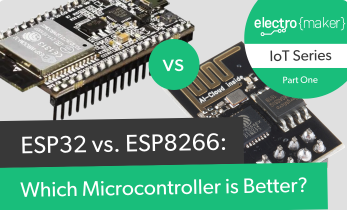











Leave your feedback...